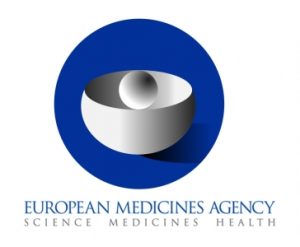The public consultation on the draft Guideline on the chemistry of active substances is open until 31 December 2024. The initiative marks an important step forward in the revision of the pharmaceutical legislation: the final form of the guideline will replace the current “Note for guidance on chemistry of new active substances” and “Chemistry of active substances”. The new guidance aims to make all information available in just one document, also for new types of active substances.

The draft guideline complements Annex I to Directive 2001/83/EC. It covers all aspects of the manufacturing of active substances, from their identification to production and analytical controls, container closure systems and stability. Requirements for new or existing active substances are also highlighted, where necessary. Existing substances are defined as those used already in the manufacturing of a finished medicinal product in the EU.
We resume the main features of the draft guideline, which does not apply to herbal, biological and biotechnological products, radiopharmaceuticals and radiolabeled products, as well as to contents of submissions made during the clinical research stages of drug development. On the other hand, the draft document applies to active substances developed following both a “traditional” or an “enhanced” approach, according to ICH Q8 and/or ICH Q11.
It is also possible not to submit detailed information on the active substance. Alternatives are represented by the submission of the Active Substance Master File (ASMF) or the Certification of Suitability to the monographs of the European Pharmacopoeia (CEP). No matter which the chosen procedure, the requirements remain the same.
Identification and manufacturing
Identification of the active substance can be provided through its International Nonproprietary Name (INN), as well as compendial (e.g. European Pharmacopoeia) name. Other names approved at a national level may also be used, together with IUPAC names, CAS numbers or company/laboratory codes.
The structure of the active substance should be clarified using its molecular formula (and relative and absolute stereochemistry, if present), and molecular mass (also referred to the therapeutically active moiety, where appropriate). Physical-chemical properties should be briefly described, focusing especially on pharmacological efficacy and toxicological safety (i.e. solubilities, pKa, polymorphism, isomerism, partition coefficient, permeability, hygroscopicity, etc.).
The Manufacturing section of the dossier should detail the name, address, and responsibility of each relevant actor participating in the process, including the external ones, as well as details of each production site (also for testing, after introduction of starting materials).
The manufacturing process should be adequately described (also graphically), including special unit operations and process controls and focusing on steps impacting the quality of the active substance or intermediates classified as “critical”. Identification of non-isolated intermediates should also be provided.
A sequential procedural narrative of the manufacturing process should be used. This should include disclosure of all used materials (i.e. starting materials, solvents, reagents, depletion agents, recovered materials, catalysts, processing aids, gases and materials used for quenching or work-up) and their quantities (in molar equivalents) and attribution to the corresponding step or sub-step. A description of critical steps, process parameters and corresponding controls should also be provided. The scale of the process and the expected yield for each step should be included.
Alternative processes should be duly justified for the use of different steps or solvents and described with the same level of detail as the main process. The impurities’ profile should also be characterised and validated, to prove its acceptability from the toxicological point of view.
Justification should be provided for routine reprocessing, including a detailed description of the method used and decision criteria. The same applies to the recovery of solvents, reactants, intermediates or active substances, with a clear indication of its occurrence in the reaction scheme. The expected impact of recovered materials should be addressed within the overall risk assessment. On the other hand, re-working procedures should not be part of the dossier and should be carried out according to ICH Q7 or EU GMP Part II.
Controls of materials and critical steps
Controls of the used materials should be listed and attributed unequivocally to the corresponding synthetic step or sub-step. Justification of the chosen specification for each material should be provided, based on the purity profile and intended use. Later steps along the manufacturing process require greater attention, as they might impact the quality of the final active substance.
As a general indication, reference should be made to the requirements of ICH Q11 and related Q&A for the selection of starting materials. Justification should be provided for the chosen ones (avoiding non-isolated compounds), which marks the start of the GMP process. Details of the supplier of the starting material should be included, together with a schematic representation of the synthesis used to obtain it and complete specifications and limits for impurities (and acceptance criteria).
Specific attention should be paid to the risk of formation of nitrosamines and consequent control strategies. Details should also be provided for all materials of animal or human origin used in the manufacturing process, as well as for those of herbal origin. Semi-synthetic starting materials obtained by fermentation or extraction from biological materials should be discussed for their impurity profile and possible carryover of specific impurities. The origin of the enzymes used in the process should also be provided.
Indications for the control of critical steps and intermediates are provided in section 4.2.4 of the draft guideline. These include tests and acceptance criteria performed at critical steps, i.e. among others the mixing of multiple components, phase change, introduction of an essential molecular structural element, or the final purification step.
Process validation and stability
Process validation must occur before the commercialisation of the product, and it should address any change in manufacturing that occurred during process development. A detailed description of the control strategy should be provided, with justification of the chosen parameters where needed, and a discussion of the possible formation of by-products and side products of toxicological relevance.
Section 4.3 further describes elements to be included in the dossier referred to the elucidation of the structure and physical-chemical characteristics of the active substance. Particular attention should be paid to the presence of polymorphic forms and solvates.
Specifications for the active substances and analytic procedures for their testing are described in chapter 4.4. Analytical procedures should be described in a form useful to reproducing testing by an Official Medicines Control Laboratory.
Batch analysis should include batches of material used in pre-clinical tests and clinical studies, data from routine quality control of the active substance, and results from at least three recent consecutive batches from each manufacturing site. Information on reference materials should be provided, together with a brief description of the storage container closure system.
As for the proposed stability, a summary of available data should be provided, including types of studies, protocols, and obtained results. Stability studies may not be necessary should the active substance comply with the respective Ph. Eur. monograph.
